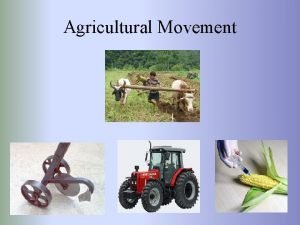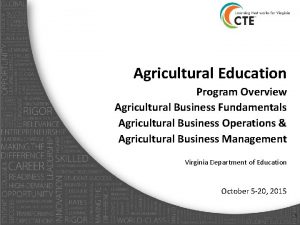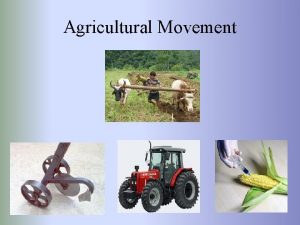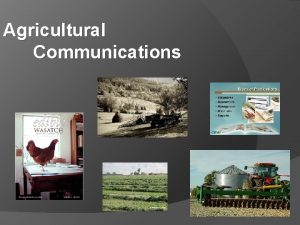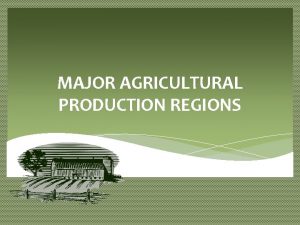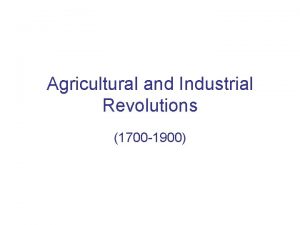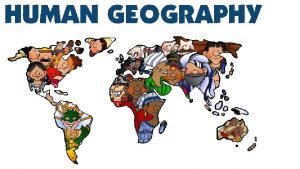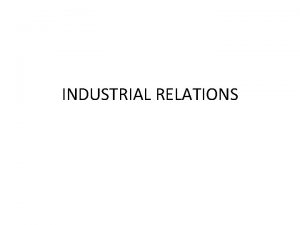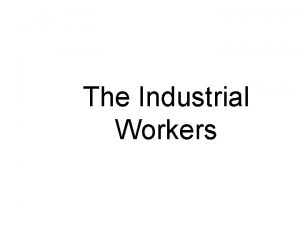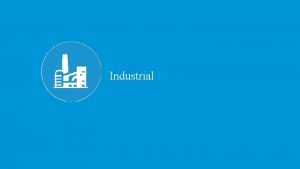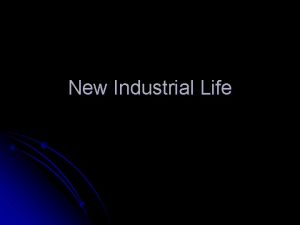Food Food Food F 2 Industrial Agricultural The














- Slides: 14

Food

Food

Food

F 2 Industrial Agricultural: The Business of Food

F 2 Food Industrial Agricultural: Key Elements Machines Economies of Scale Synthetic Inputs

F 2 Food Large Scale Farming. Agriculture Practices Industrial Effects: • Food travels long distances to reach consumer • Large amounts of fossil fuels are required to operate farm machinery and to transport food • Farms owned by corporations. Fewer small family farms

F 2 Food Monocultures Effects: • Loss of plant and animal diversity, ecosystems. • Disease and crop failure. If one plant gets sick in a monoculture, then all of the other plants are also susceptible to the disease. • Increased dependence on pesticides and herbicides. • Depletion of soil nutrients and biological activity.

F 2 Heavy Inputs Effects: • Soil, water, and air pollution • Depletion of ground and surface water supplies • Soil erosion and depletion • Elimination of beneficial microorganisms in soil • Insects and bacteria develop resistance to pesticides Food

F 2 Use of hormones and antibiotics Effects: • Soil, air, and water pollution from concentrated animal waste and dead animals • Harmful bacteria, resistant to antibiotics, spread disease quickly, and possibly affect humans • Mistreatment of animals. Food

F 2 CAFOs (Concentrated Animal Feeding Operations) Effects: • • Huge amounts of animal waste, stored in areas called lagoons Lagoon spills and overflows contaminate soils and groundwater, and destroy aquatic ecosystems Cattle waste produces large amount of the greenhouse gas, methane, a big contributor to climate change. Quick spread of disease between many animals confined to a small area Animals are fed diets their bodies cannot digest Discomfort, stress, injuries, and lack of exercise for animals Animals are crowded in pens or sheds where movement is restricted and daylight is limited Food

F 2 Genetically Modified (GM) Crops Effects: • Potential risks posed to humans and wildlife • Genetically modified plants could breed with surrounding wildlife, infecting non-GM crops with GM material • Food grown for durability, not taste. Loss of quality • Loss of biodiversity (seeds) Food

F 2 Food Environmental Impacts • Deforestation and Species Displacement • Loss of Pollinators • Soil Erosion and Depletion • Loss of Genetic Diversity • Water depletion and pollution • Dependent on Fossil Fuels

F 2 Health Impacts • Water – Over two-thirds of the fresh water used by humans is used for agriculture. • Residue on food • Antibiotics, Growth Hormones, GMO – Antibiotic resistant strains of bacteria – Introduction of genetically engineered proteins to human body (r. BGH) • Taste Food

Case Study: The Green Revolution Food From the 1950 s to the 1970 s, new agricultural technologies were introduced around the world with the goal of increasing food production. This was known as the Green Revolution.
 Hát kết hợp bộ gõ cơ thể
Hát kết hợp bộ gõ cơ thể Ng-html
Ng-html Bổ thể
Bổ thể Tỉ lệ cơ thể trẻ em
Tỉ lệ cơ thể trẻ em Gấu đi như thế nào
Gấu đi như thế nào Thang điểm glasgow
Thang điểm glasgow Bài hát chúa yêu trần thế alleluia
Bài hát chúa yêu trần thế alleluia Các môn thể thao bắt đầu bằng tiếng đua
Các môn thể thao bắt đầu bằng tiếng đua Thế nào là hệ số cao nhất
Thế nào là hệ số cao nhất Các châu lục và đại dương trên thế giới
Các châu lục và đại dương trên thế giới Công thức tính thế năng
Công thức tính thế năng Trời xanh đây là của chúng ta thể thơ
Trời xanh đây là của chúng ta thể thơ Cách giải mật thư tọa độ
Cách giải mật thư tọa độ Làm thế nào để 102-1=99
Làm thế nào để 102-1=99 Phản ứng thế ankan
Phản ứng thế ankan















